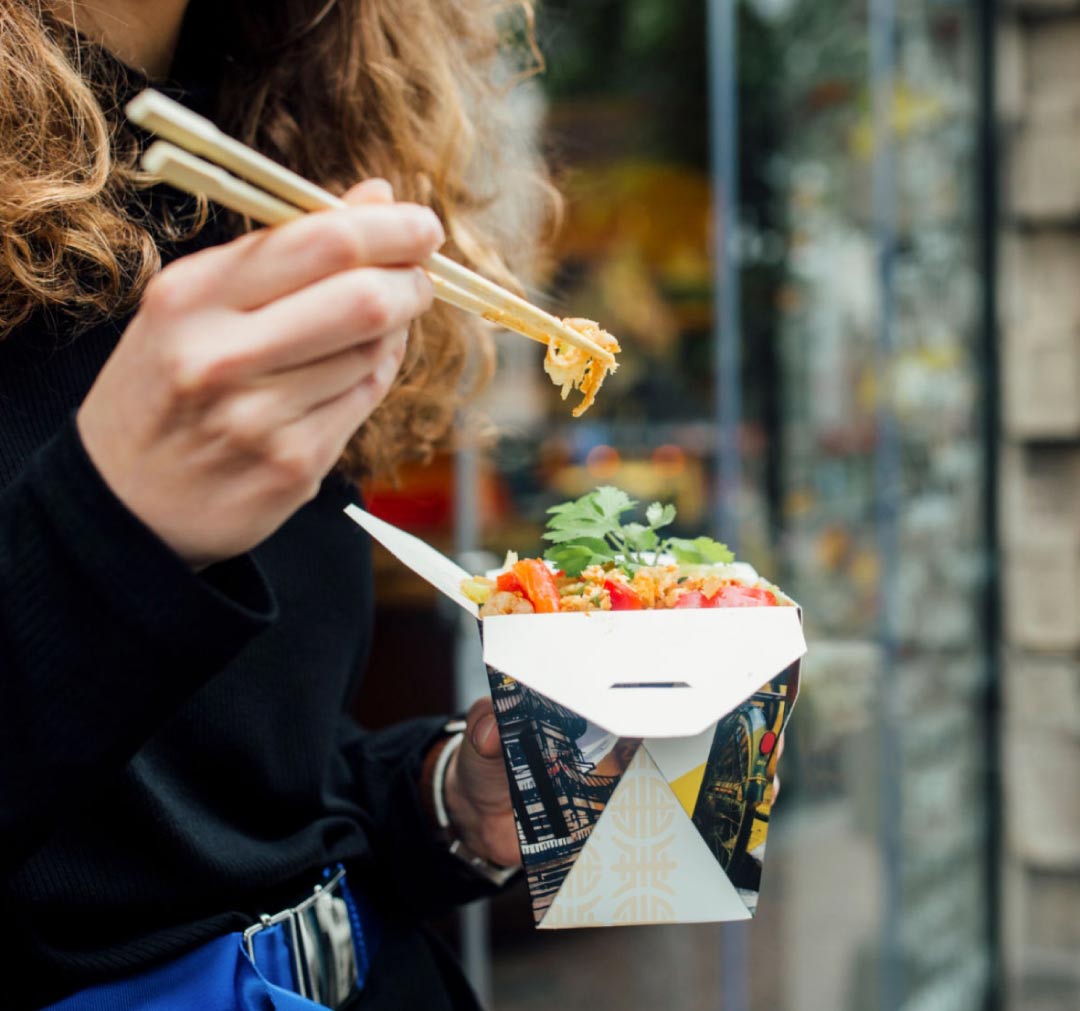What are frozen food labels?
Food labels are like a form of marketing. They let you know if your food is organic or if the product is made somewhere in your place. It also lets you know what ingredients are contained in that product and how healthy it is for you.
In recent years, the frozen food section in supermarkets has become a lot more interesting than it used to be. It's not just peas and corn anymore; there are dozens of different products you can buy at the supermarket. Tastes and preferences have changed over time. This is why manufacturers have had to start making products that fit into our new lifestyle.
Freezing food preserves it longer than refrigerating it. This is because the low temperature stops the growth of bacteria that cause food to spoil. But, frozen food also has a few downsides. Taste and texture are affected. Freezing doesn't kill bacteria or stop the natural aging process of food.
It's best only to freeze fresh foods that you plan to eat in a short period, then thaw them before consumption. The shelf-life of most frozen foods is one to two months after they are thawed. The exceptions are meats, poultry, and fish, which only last one month after thawing.
To get the longest possible shelf life from your frozen foods, keep them at 0 degrees F or lower. Make sure they are wrapped tightly so that no air can get in and freezer burn can't get out. A freezer thermometer will tell you if your freezer temperatures have dropped below freezing.
Frozen food labels contain a wealth of information. That includes the ingredients, nutritional values, and all sorts of other details. Adding an ingredient label to a food package is required by the Federal Food, Drug, and Cosmetic Act (FFDCA). The label must appear in English on one side of the box and any other language used in marketing the product on the other side.
Tiny text is usually reserved for items that will not be consumed in a reasonable amount of time. For example, "sell by" and "use by" dates, so stores will know how long to display the product on their shelves. Ingredients are also printed in teeny-tiny print. But can be read with a magnifying glass or a vital light source.
The complete ingredient list may be published somewhere else on the package. While many manufacturers opt to list ingredients on their packages, this is not required by law. Some manufacturers choose not to include ingredient lists for specific reasons. Such as proprietary recipes. But if there are any significant allergens present in the food, they must still be noted on the label.
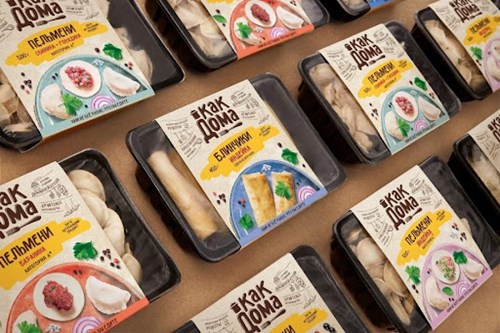
Tips to get good frozen food label
1. Use label printers and sticky labels to create a professional look
There is no doubt that frozen food labels are becoming popular with online shoppers. Tasty, easy-to-prepare meals delivered straight to the door can be a godsend. Especially for those who don't have the time to cook. But many of these meals are not only convenient, but they're also healthy and nutritious. One obvious problem with frozen food is the lack of nutritional information on the packaging. This makes it difficult to know precisely what you're serving up to your family and friends.
Label Printers are easy to create a professional look on your Frozen Food labels. Tons of people have realized that they can print on any surface or material with label printers. Some use them for their business cards; others use them for price tags. Whatever you decide to do with your label printer, the important thing is that you'll be able to take your ideas from concept to reality without breaking the bank.
A label printer is an excellent investment for every business. Especially if you're offering frozen food products. Frozen food labels need to be durable and waterproof. Precisely what a label printer can produce.
Consumers will appreciate knowing what the product entails before buying it. That's where the label comes into play. Be sure that your labels are professional in appearance and concise. Information in the label should be easy to read.
There are several ways to print labels for your frozen food business. You can use laser printers or inkjet printers to create your labels. You can include them with your products when you send them to customers.
However, it is much easier to use label printers with pre-designed templates that you can customize. The benefit of this method is that you do not need to purchase a printer. You take the frozen food label template, edit it with whatever information you need, and then print off the labels on the label printer.
This saves time and money since you do not have to buy a printer and pay for ink cartridges. When you use this method, all of the work is done online and only requires a computer, Internet connection, and a label printing program.
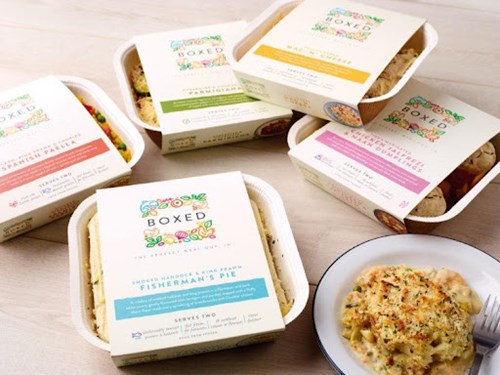
2. If you're going for generic, try to include some imagery, be creative and stand out from the crowd
Generic frozen food labels usually have no images or use a "frozen-food" template. You can stand out by incorporating your photography or illustrations relevant to the product inside, like a celebrity chef for a frozen pizza.
The best generic labels have a clear and straightforward message that appeals to your core consumers. You can convey this in words (like "Authentic Italian Sausage") or with images. If you're going with words, look at other examples of generic labels to see what has been done before.
When choosing an image, make sure it isn't another company's trademarked logo or copyrighted image. Also, make sure the image is appropriate for your product. A straightforward label with an image of a plate of spaghetti won't do much good on packaged peas.
Frozen food packaging is a competitive market, and the need to stand out on the supermarket shelf is enormous. How should you go about it? All frozen food packaging should include a clear indication of what it contains, but this can take many forms depending on the type of product.
For example, different types of fish require very different labels to show that they are "fresh" and of high quality. This means that it's essential to understand the product you're selling before making your design.
You may also want to include some imagery on your label, particularly if you're going for generic. Try to pick something that stands out rather than using a bland stock image from an online resource. By being creative and standing out from the crowd, you'll help your customers see exactly what they're buying before making their purchase.
Let's face it. Most frozen food labels are a bit boring. Many of them seem to stick with the same basic themes (ice cream and pizza) and don't try to stand out from the crowd. It's a bit like writing a blog post or article that is just a regurgitation of everything else you've ever read on the subject. You wouldn't do it. You want to be different. Well, that's what shoppers want too.
So why not make your frozen food labels stand out? They are essentially your "cover" for your frozen food product. They get people to stop and look twice at your product and make them want to buy it. Frozen food labels are not just something you slap on the packaging and forget about. They need to be designed with care and attention given to each element, so they grab people's attention and sell your product effectively.
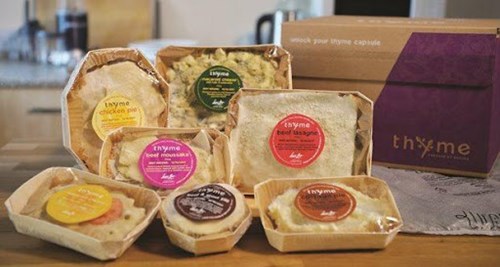
3. Consider printing "best before" not "use by"
Frozen food and fresh food have similar labels, with one exception. The label reads "Best Before" for frozen foods instead of "Use By." This is because frozen food products are safe to consume even after the "use by" date.
The FDA explains that it doesn't recommend freezing fresh fruits or vegetables that you'll eat raw (for example, lettuce) because they can lose nutrients when they're frozen. But other frozen food products that you cook, such as vegetables and poultry, are safe to eat long after the "best before" date on the package.
"Best before," dates tell consumers the date after which the product may lose some of its flavor or texture, but it's perfectly safe to consume. Research has shown that consumers — particularly younger ones — do not read or understand "use by" dates correctly and end up throwing out perfectly good food as a result.
The best before date is the store's recommendation for when you should eat food in a frozen state. The use-by date also means how long the food will keep its quality rather than how long it can be eaten. For example, a pack of peas will last for about 11 months, but it has probably been frozen for several weeks or months before you buy it. Therefore, there is no need to waste good money on food that has gone out of date as most food can be kept as long as it is frozen.
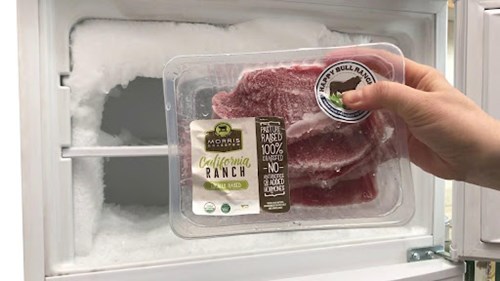
4. If you plan to offer a money-back guarantee, do this on your packaging, not just your labels
Product labels have limited space. Only the most important details can be included on a label. This is why, when you are offering a money-back guarantee, you must be clear about it on your packaging too. It is imperative to tell your customers that they will get their money back if they are not satisfied. Never forget to include all the necessary info on your labels, including how long the guarantee lasts, how to make a claim, and how you'll refund them their money.
Most customers are very reasonable. They want to be sure that what they are buying will do what they want and will last. One way to reassure them is with a money-back guarantee, but don't expect your customers to find it on their own.
You need to make sure they see it and understand it. While you can use the terms "money back" or "guarantee" on your labels, don't just trust that your customers will find it there. Instead, put the information on your product packaging, so all of them see it when they take the item from the store shelf.
Make sure that the wording is prominent, easy to read, and in the same place each time. Packaging is part of your marketing tool kit and if you want your money back guarantee to work for you, use every tool in that box.
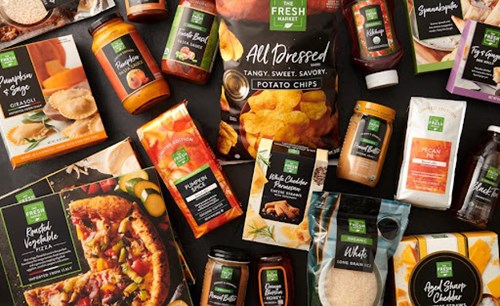
5. Think about having a call to action
Designing a label for a frozen food product is a big challenge. The label must not only be attractive, but it must also be functional. Consumers must easily find information about the products, such as nutritional facts and ingredients.
There should also be room for marketing material to encourage consumers to buy the goods. A good label design can help increase sales of your frozen goods by providing precise and easy-to-find information that makes consumers feel comfortable in purchasing your goods.
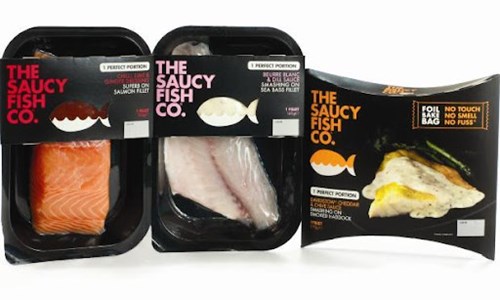
What kind of call to action should you have on your frozen food label?
Most people are used to seeing "sell by" and "use by" dates on their perishable food, such as meat or dairy products. These dates help the consumer know when the product is no longer safe to eat. The U.S. Department of Agriculture has strict rules for how these dates must be written. For example, a date like "sell by 11/15" means that the store must sell or give away this product by November 15.
A date like "use by 11/15" means that the product should be used by November 15. Recently, some manufacturers have started providing cook or freeze-by dates on their packaging. The date may indicate how long you can store the product in your freezer or how long you need to cook it before consuming it.
Be aware that not all companies will provide cook or freeze-by dates because federal law does not require it. Additionally, each company may have its policy for what a particular date means in storage or cooking time.
Think about having a call to action on your frozen food label. Your customers may be looking for an easy solution to feed their families with healthy meals that don't require much time in the kitchen.
Make sure your packaging communicates the benefits of your product and includes some information about how to use it, such as "Add frozen chicken breasts to the crockpot for 4 hours and serve over rice." Also, consider including cooking times, temperatures, and special instructions for different meals.
6. Make sure you utilize available space
There are many reasons why a frozen food manufacturer might want to utilize available space on their label. The most common is to make the product stand out from the competition without going through the entire process of re-labeling a new box. Or, it can be used to instruct consumers how best to defrost or cook their product.
The question is, how much room do you have? The answer depends upon the size of the package and what else is printed on it. The total area of a frozen food label is "freezer real estate." This includes all text and graphics on the front and back of a box or bag. The exact amount of freezer real estate available will vary by package type. Still, it's typically between 2" and 4".
Sometimes, there might also be a small amount of freezer real estate that's located in an area that's not visible when the package is in its normal upright position, such as along the side seam or on top of any lid seals.
Frozen food labels should be placed in a spot where they will not block any vital information. It is crucial to have the correct date and lot code printed on the label, so your customers can see that you are providing them with fresh food items. Also, you must have a clear label for frozen food storage so that your customers can quickly see how long they have before the label expires.
Agencies like the FDA state that every product label should be read within 3 feet of where it is placed in the store. This means you have about 2 feet before the label can no longer be read by the customer standing up close. If this happens, you are putting yourself at a disadvantage, and you may find yourself losing sales, as well as the customer's trust.
In most states, it is a law that frozen foods must be kept under certain temperatures and conditions to ensure that they remain safe for consumption. Having your frozen food labels placed in an area that is not easy to read can pose a problem if there is an emergency recall or if anyone needs to throw out food items due to fear of contamination.
If you want your frozen food product to stand out in the freezer, consider designing a label with a secondary panel. This additional label goes over the main label but leaves space for more information. Secondary panels are beneficial for food products sold in different shapes, sizes, and colors. T
the frozen food industry has been using secondary panels for many years, particularly on packages of meat and vegetables. Other industries often overlook these because they're used to a standard shape and size for their packaging.
A secondary panel can be just as effective for small businesses as for large corporations. It's an excellent way to stand out from the crowd and provide consumers with the information they need about your product without wasting space on your primary label.
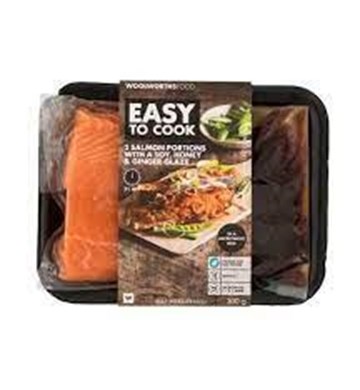
7. Be aware of your food's weight, size, and presentation on the label
Food labels can be deceiving because packages that contain smaller portions may appear to be lower in calories than those containing more significant parts — but not always. You have to read the label closely. While a 12-ounce soda might have 120 calories, a 20-ounce soda has 240 calories, so you need to drink less of the smaller package to consume fewer calories.
Look at serving sizes. The size of packaging also can be deceptive. A 12-ounce can of soda contains 120 calories, but a 20-ounce bottle has 240 calories. By consuming two servings from a 20-ounce bottle, you're getting an extra 160 calories.
The food label was once a rather dull, monochromatic document — but no longer. The food industry has become increasingly sophisticated in its use of color to attract consumers. And while the effect is not always positive, you must understand how color can influence you when you're shopping.
Taste-test studies have shown that foods with red packaging are more likely than identical foods in blue or green packages to be rated as tasting better — even though the foods were similar. That's because red is considered an "alert" or "exciting" color, making us think the food will taste better.
Also, if a product is packaged in silver rather than white, that suggests the food has a higher quality, according to taste-test studies. In addition, there's evidence that people tend to choose products whose labels include images of fruits and vegetables over those with only text or no graphics at all.
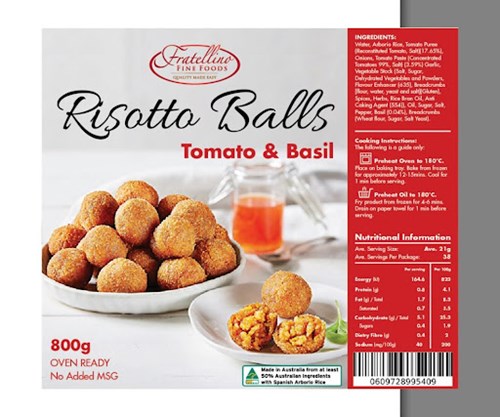
8. Use an A6-sized label, so it fits in fridges with limited space
As a frozen food producer, you know how important it is to produce high-quality frozen food. Your labels are the key to your success, and they need to be both professional and eye-catching. Here's some information on how to make sure your frozen food labels look their best.
The most significant aspect of your label is its size. If you're producing an A6 label using a standard A4 printer, then it's going to be too large for the average freezer. The dimensions of the average U.K. kitchen fridge freezer are around 250mm x 200mm, which means that an A4 label will be far too big.
If you're looking for your product to stand out on the shelf, you need to think about a smaller label size such as A5 or A6. You may think that this will reduce the appeal of your label, but actually, it'll make it far more noticeable, as it gives that much more visual impact when displayed on the freezers in supermarkets and stores.
How do you make sure your label gets noticed? Make sure it's big enough to see from across the store. There are many reasons why your customers might not notice your label. Maybe they're distracted, or it's too small, or they're looking in a dimly-lit part of the store.
If you have to fit more information on your label, try using an A6-sized label instead. It's the same height and width as your average A5-sized labels, but it's narrower than an A4, so it's much easier to read on a crowded shelf.
The size of the label on the packaging is vital for several reasons. Firstly, it will affect how much space the product will take up in your freezer. If your fridge has limited space, you'll need to have an A6-size label on your frozen food product to make sure it fits. Secondly, it will affect how easy it is to read and understand the label information, so you need to make sure that enough space is left to fit as much text as possible onto the label.
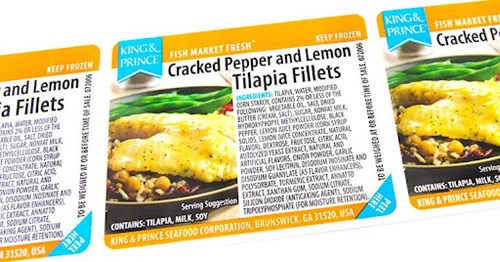
Conclusion
Frozen food labels are important because they help ensure the safety of frozen foods. They provide vital information on the ingredients used in frozen foods. Food labels also indicate if a product has been cooked or not, which is necessary to avoid food poisoning. If you ever have doubts about what to eat, read the label first to ensure it is not expired and safe for consumption.
Frozen food provides a wide variety of options that are convenient and affordable. They are easy to prepare, and they can be stored for long periods without losing their original freshness or taste. However, frozen food labels should be read carefully before purchasing food items because some frozen foods may contain harmful ingredients such as sodium nitrate.
The Frozen Food Council acknowledges the importance of labeling all frozen foods in the United States. Their objective is to provide consumers with information that will help them make educated decisions when buying frozen foods. To be sure, several essential factors should be included on a frozen food label, regardless of whether it is an individual item or a box of food.
This information is printed on the label for all products, including pizzas and microwavable meals. The label also shows the retail price per pound and the total price per pound. The nutrition facts table is also found on this label.
This information will help you determine whether or not you are getting enough protein in your diet or if you need to add more fiber to your diet. If you are looking for something that has less fat and calories while still satisfying your taste buds, then these labels might come in handy. If you want to have the best frozen food label in town make sure to contact West Coast Label!



